Charger Klarus Smart Charge C2
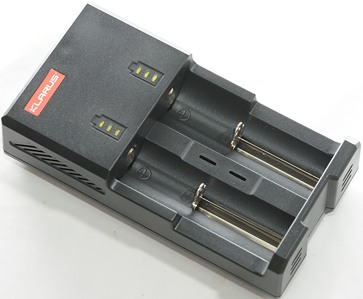
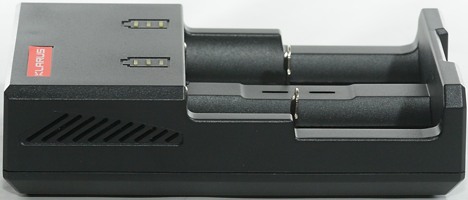
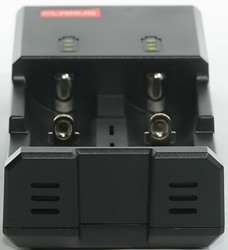
This is a simple dual channel charger from Klarus with support for both NiMH and LiIon. It can also be used as a power bank.
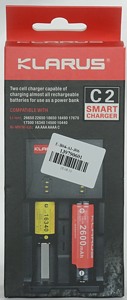



I got the charger in a retail cardboard box from a gearbest. The box has the specifications printed on the back.
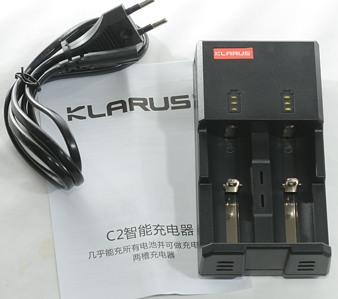
The box contained the charger, a mains cable and a instruction sheet.
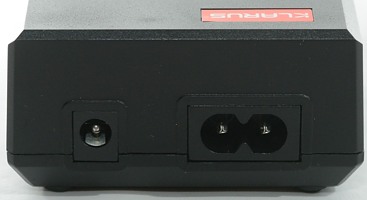
The charger has both a mains power input socket and a 12V DC input barrel socket.

The charger can works as a power bank. With one LiIon battery it is rated for 1A and with two LiIon batteries it is rated for 2A.
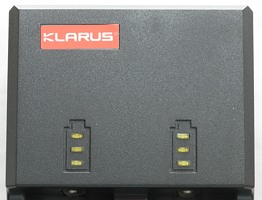
The charger do not have much user interface, only 3 yellow leds for each battery. When charging one of the leds for each battery will flash and the number of lit leds will show the actual charge status. When finished all 3 led will be steady lit.
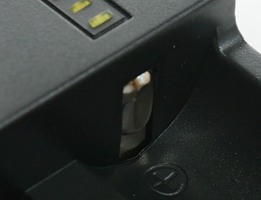
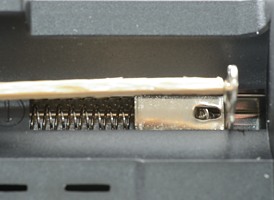
The charge uses the typical slider construction with a metal rail and works from about 30mm to 69.3mm, i.e. the charger cannot handle the longest protected 18650 and 26650 cell.


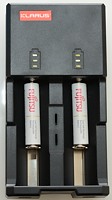
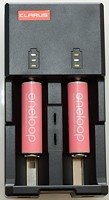
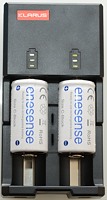
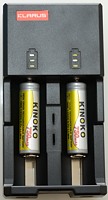
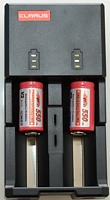

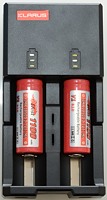
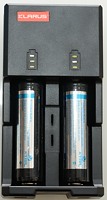
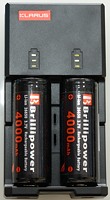
The charger can handle 69.3 mm long batteries, including flat top cells.
The minimum charge current is 0.5A, this is on the high side for 10440 cells.
Measurements
- Power consumption when idle is 0.42 watt.
- Below 0.7 volt the charger will flash all 3 leds and charge with 4mA.
- Between 0.7 volt and 2.0 volt the charger assumes NiMH
- Above 2.0 volt the charger assumes LiIon
- The charger will not restart if battery voltage drops.
- Charge will restart charging after power loss, or battery insertion.
- When LiIon battery is fully charger the charger will charge with 0.6mA
- When not connected to power it will drain about 14mA from a LiIon and 0.2mA from a NiMH battery.
Charging LiIon
%20%231.png)
This is a nice simulated CC/CV charge curve with 7mA termination.
%20%232.png)
Second slots looks the same as the first.
%20%231.png)
%20%231.png)
No problem with different capacity.
%20%231.png)
This older cell is also handled fine.
%20%231.png)
%20%231.png)
The smaller cells is also handled fine.
.png)
Two cells is charged with about the same speed as one cell.
.png)
The current consumption is only about 0.5A on 12V.
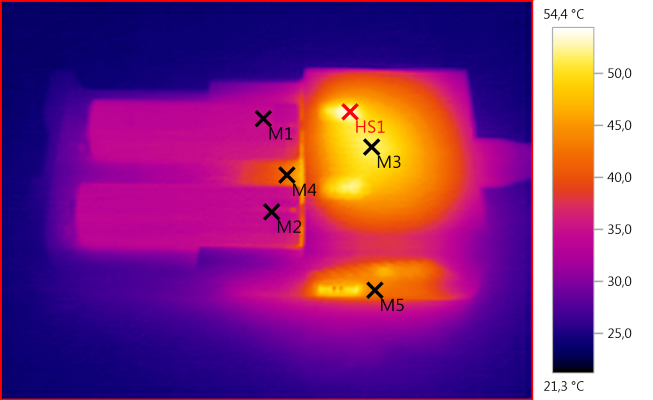
M1: 34,6°C, M2: 34,9°C, M3: 51,6°C, M4: 42,6°C, M5: 43,4°C, HS1: 54,4°C
Batteries are fairly cool during charge.
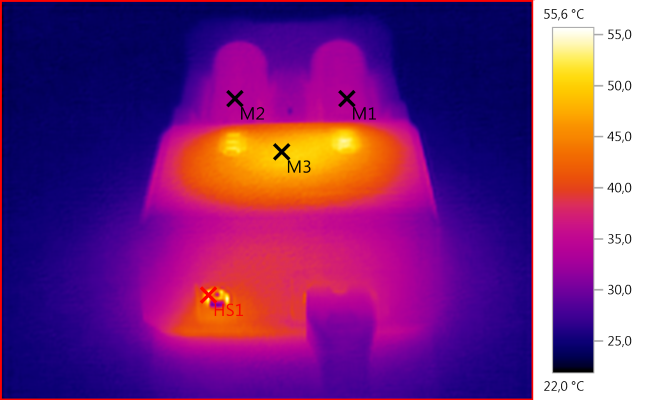
M1: 33,8°C, M2: 33,9°C, M3: 49,6°C, HS1: 55,6°C

The charger needs about 4 seconds to start and measures voltage with the current turned off.
Charging NiMH
%20%231.png)
The charger is terminating on voltage and probably slightly before the cell is full (Temperature has not started to increase).
%20%232.png)
It works the same way on the second channel.
%20%231.png)
%20%231.png)
The Pro and XX cells works the same way.
%20%231.png)
But on the powerex the temperature has started to increase, i.e. the cell is full.
%20%231.png)
Again a slightly premature termination.
%20%231.png)
Detecting a full cell is fairly fast with voltage detection.
.png)
Two cells is charged with about the same speed as one cell.
.png)
The power consumption from a 12V supply is fairly low when charging NiMH.
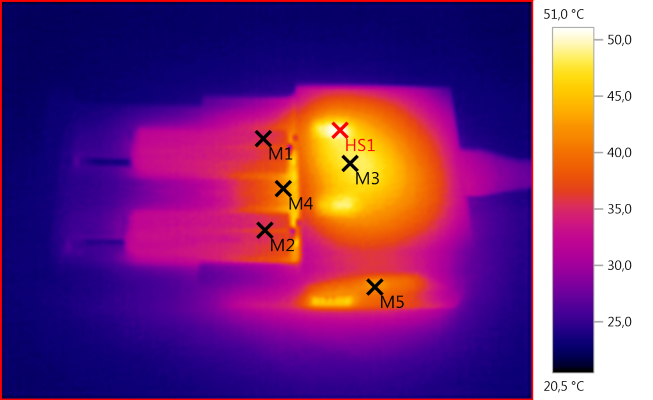
M1: 35,2°C, M2: 36,5°C, M3: 48,3°C, M4: 41,9°C, M5: 42,4°C, HS1: 51,0°C
Also NiMH stays fairly cool during charging.
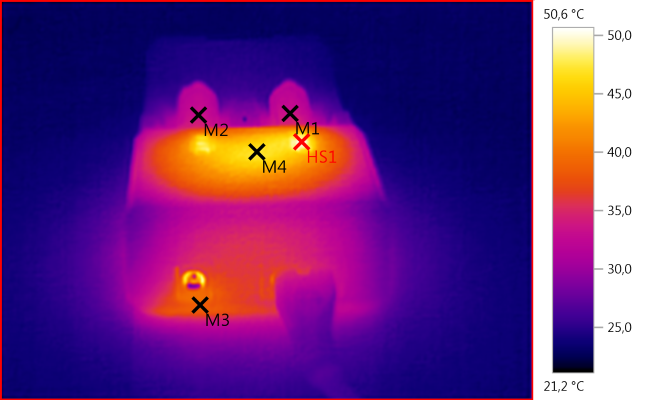
M1: 33,5°C, M2: 33,6°C, M3: 38,7°C, M4: 47,0°C, HS1: 50,6°C
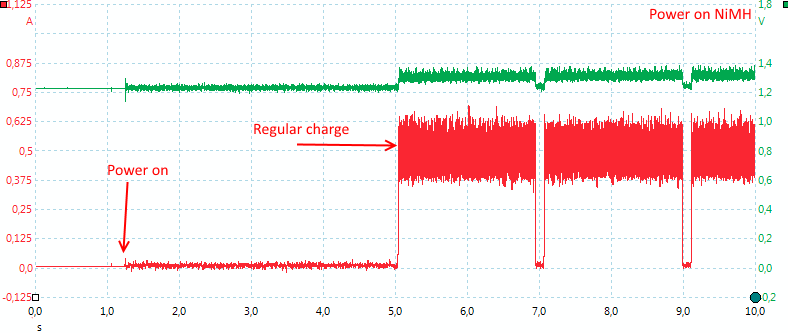
The charger needs about 4 seconds to start and measures voltage with the current turned off.
Charging LiIon and NiMH at the same time
It is possible to charge one LiIon and one NiMH battery in the charger at the same time.
.png)
In this curve I recorded the NiMH battery, it looks the same as above.
.png)
The LiIon also looks the same as above, the power consumption drops when the NiMH battery is finished.
USB output
- USB output is turned off when mains is connected.
- Batteries are drained to 2.8 volt
- When nothing is connected to usb output it will drain about 14mA from a battery
- USB output is coded as Apple 1A
%20%231%20load%20sweep.png)
With one cell supplying the usb output it can deliver just above 1A, before output starts to drop. There is no real overload protection.
%20%232%20load%20sweep.png)
%20load%20sweep.png)
With two cells the current is double up, but again no overload protection.
%20%232.png)
With 0.5A load and one 18650 cell the usb output can run for about 3½ hours. The output will not turn completely off when the battery is empty, but keeps the battery voltage at termination voltage.
%20%231.png)
When the load is increased to 1A with one cell the output voltage cannot be maintained at low battery voltages. It looks like the maximum battery current is limited to about 1.8A.
%20%232.png)
There is a slight voltage difference between the two batteries.
.png)
When running with two batteries the voltage difference it obvious, at about 120 minutes the first battery is empty and the second battery takes over.
Note: The efficiency calculations are wrong, because I only measure on one cell.
.png)
Running at the full current (2A) works, but again the output voltage sages when the batteries are low on voltage.
Note: The efficiency calculations are wrong, because I only measure on one cell.

Output has very low noise with 5mV rms and 45mVpp

Increasing the load will increase the noise, but it is still very low 9mV rms and 70mVpp

Even at full current the noise is low with 35mV rms and 280mVpp
Testing the mains transformer with 2500 volt and 5000 volt between mains and low volt side, did not show any safety problems.
Conclusion
This is a simple charger to use and it is good at charging both LiIon and NiMH batteries.
The usb output works fairly well. The output voltage will sag before the batteries are empty and it drains the batteries to 2.8 volt, instead of turning usb output completely off when the batteries reaches 2.8 volt. The always on power bank function does also mean that it is a bad idea to leave batteries in the charger when not powered (A few days is ok, but the battery will need charging).
The final verdict must be that it is a good charger.
Notes
The charger was supplied by Gearbest for a review.
Here is an explanation on how I did the above charge curves: How do I test a charger
Read more about how I test USB power supplies/charger
























%20%231.png)
%20%232.png)
%20%231.png)
%20%231.png)
%20%231.png)
%20%231.png)
%20%231.png)
.png)
.png)



%20%231.png)
%20%232.png)
%20%231.png)
%20%231.png)
%20%231.png)
%20%231.png)
%20%231.png)
.png)
.png)



.png)
.png)
%20%231%20load%20sweep.png)
%20%232%20load%20sweep.png)
%20load%20sweep.png)
%20%232.png)
%20%231.png)
%20%232.png)
.png)
.png)


